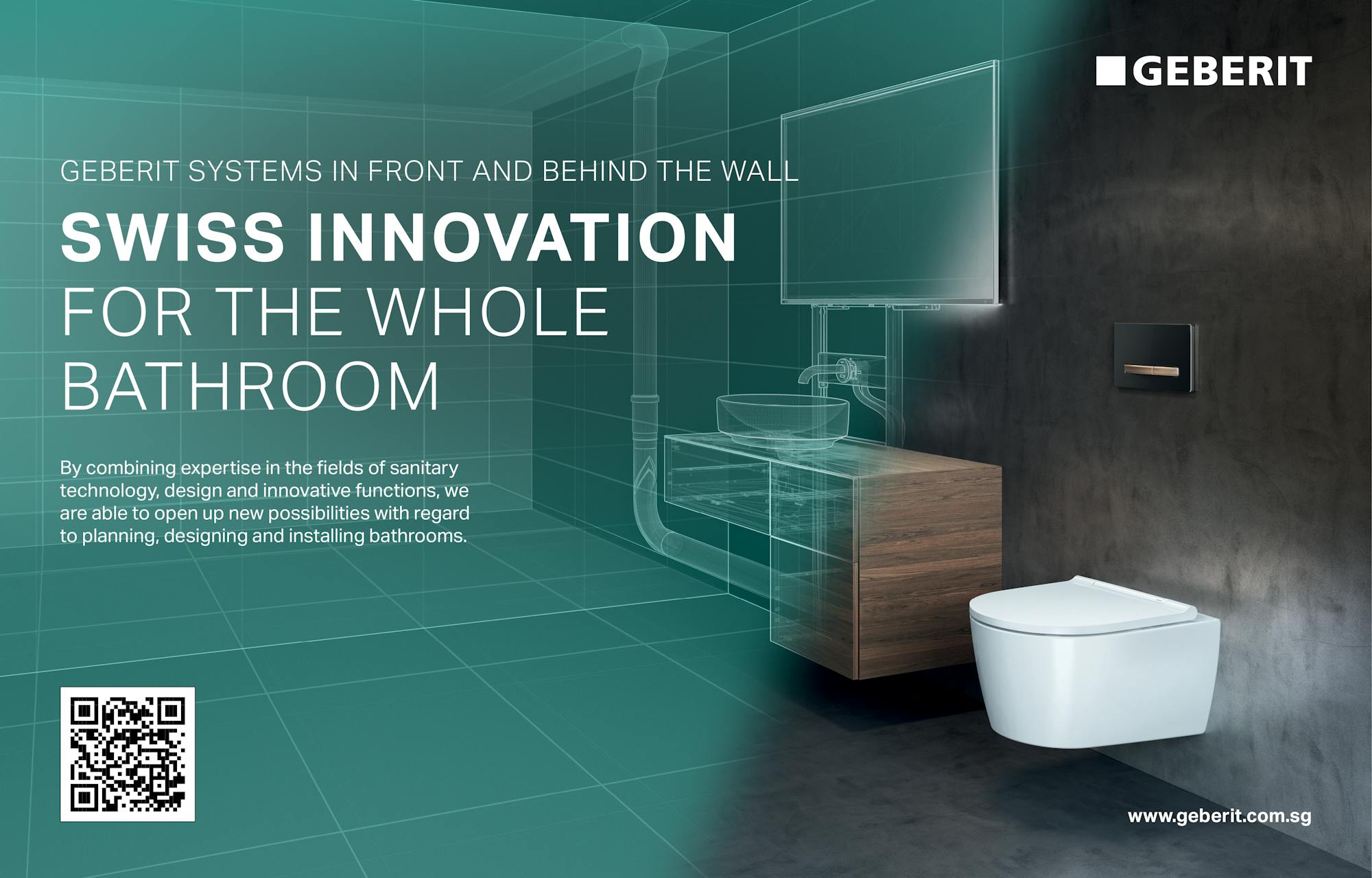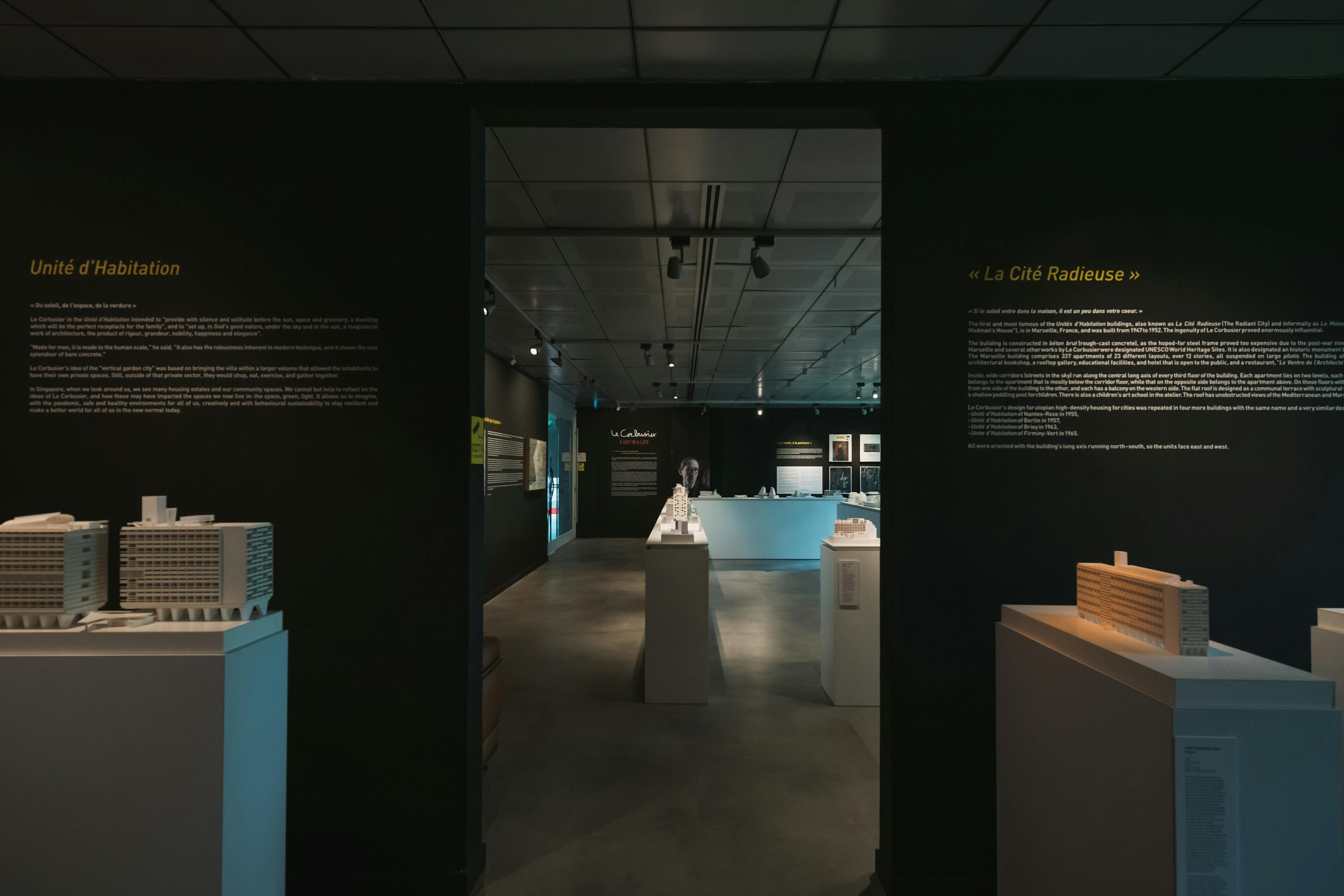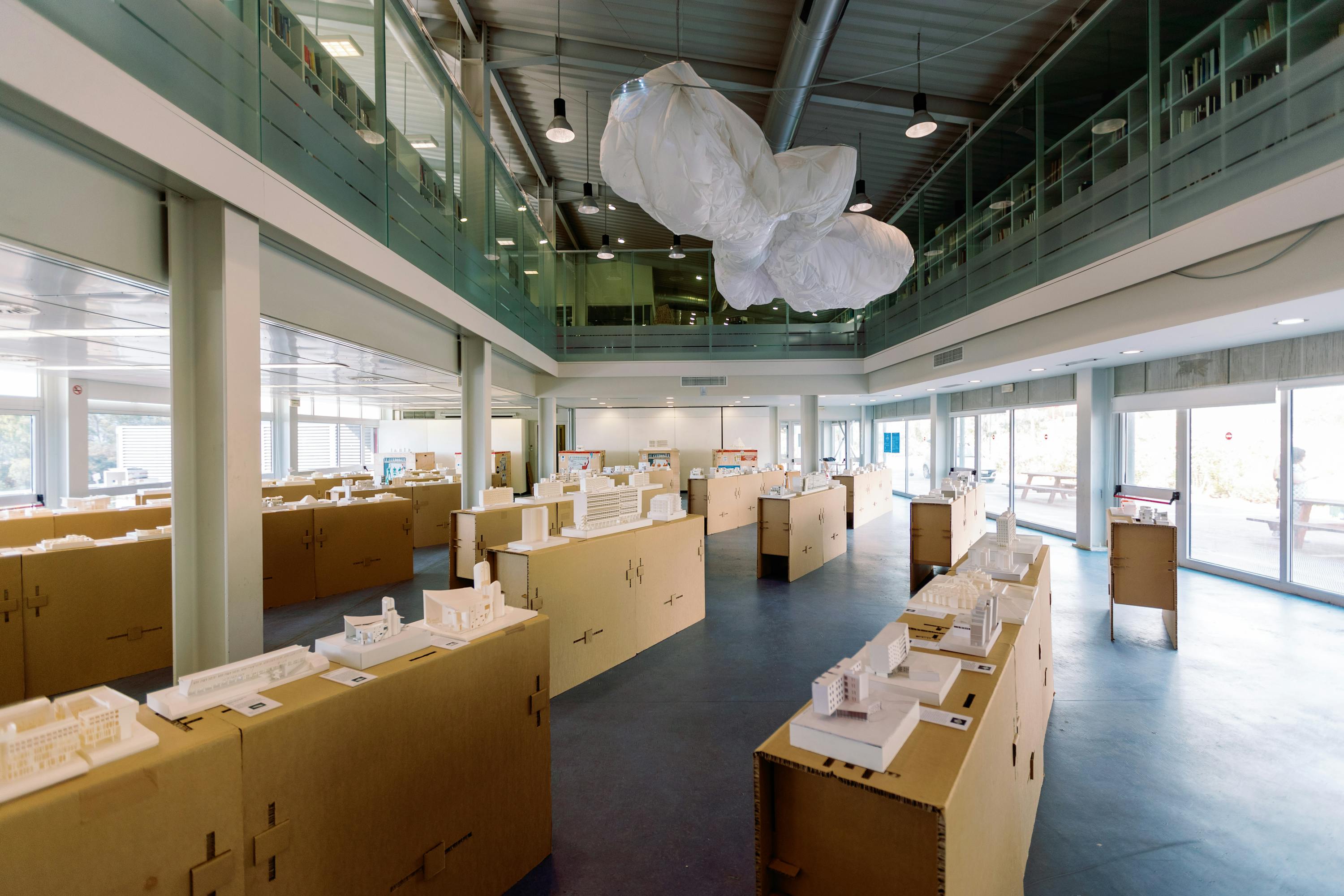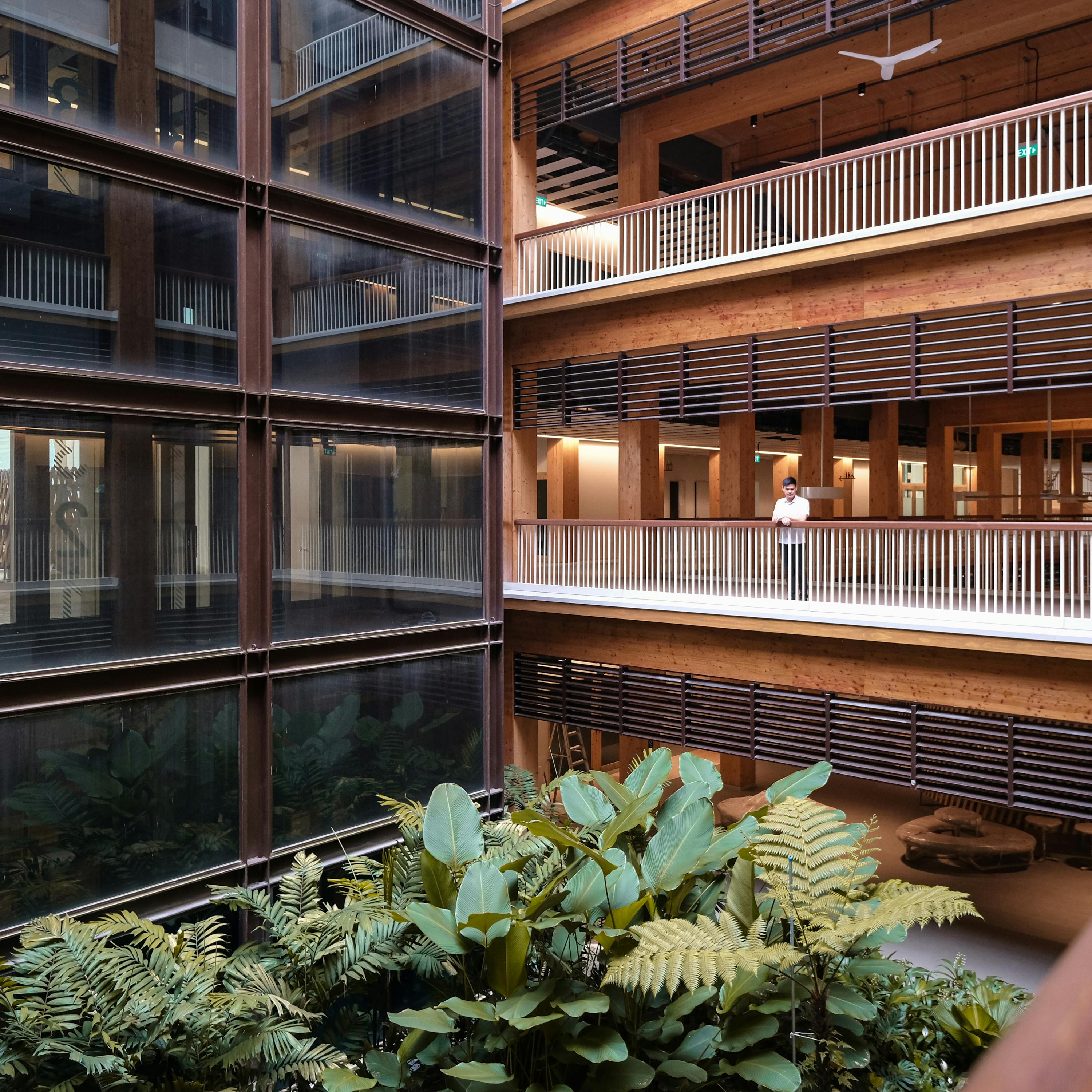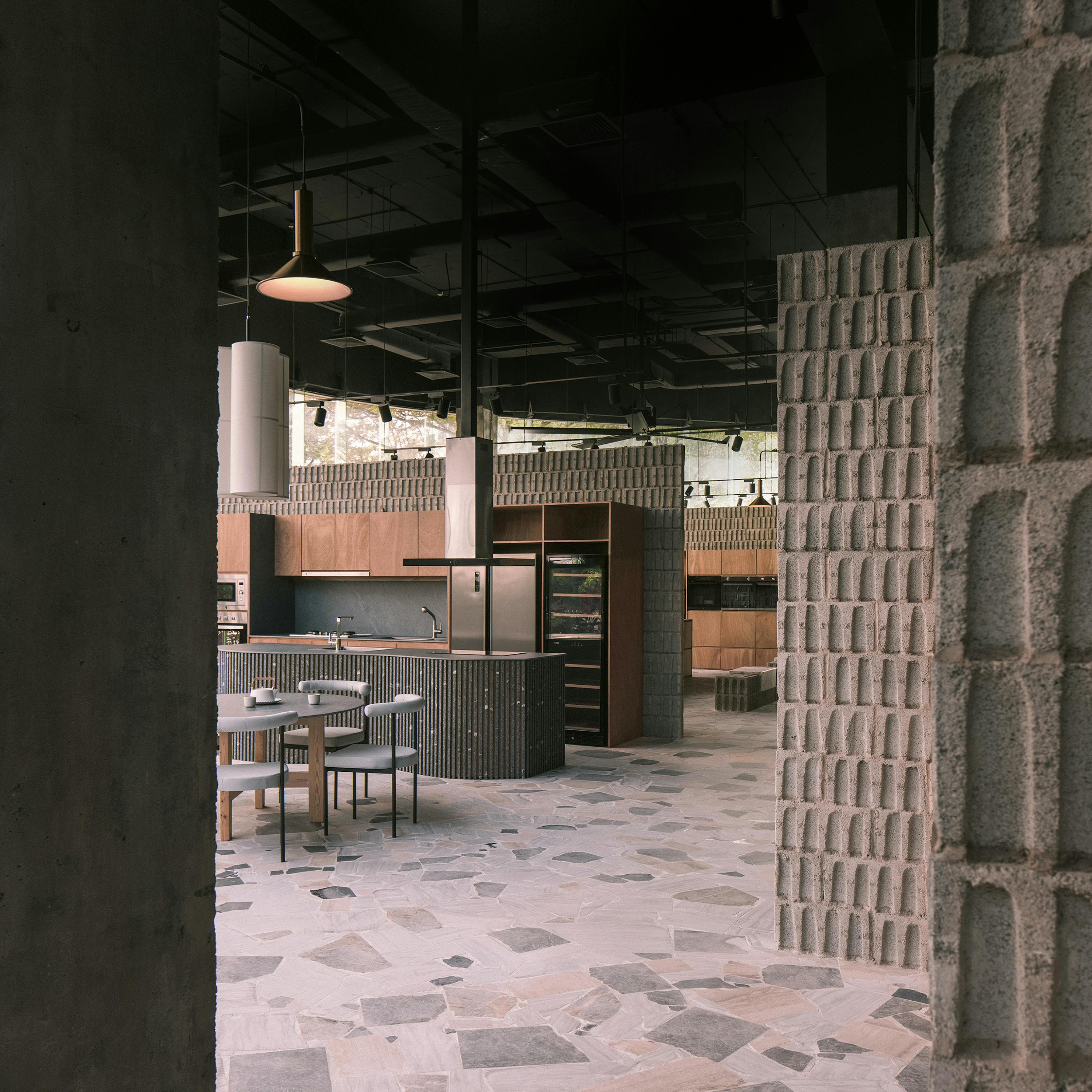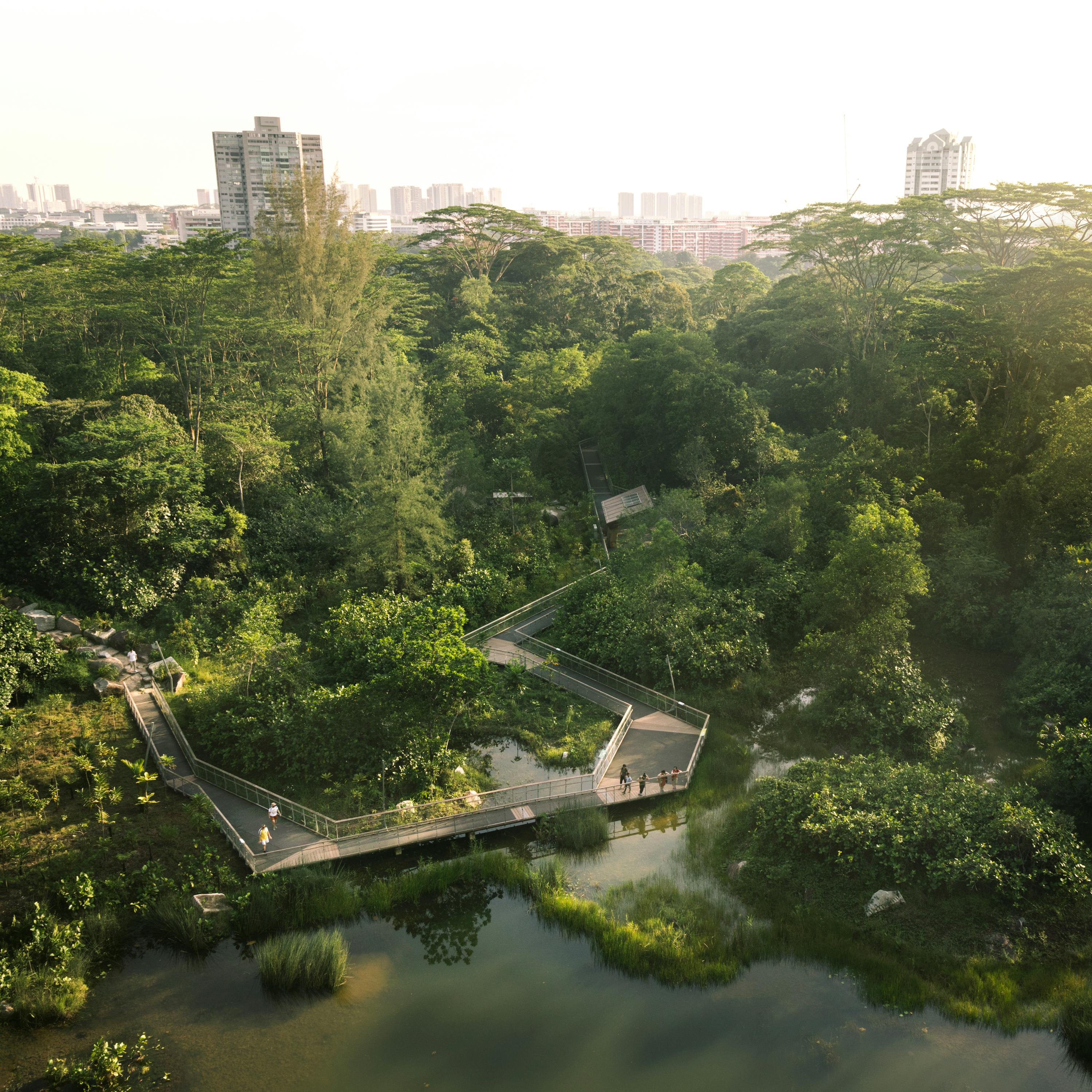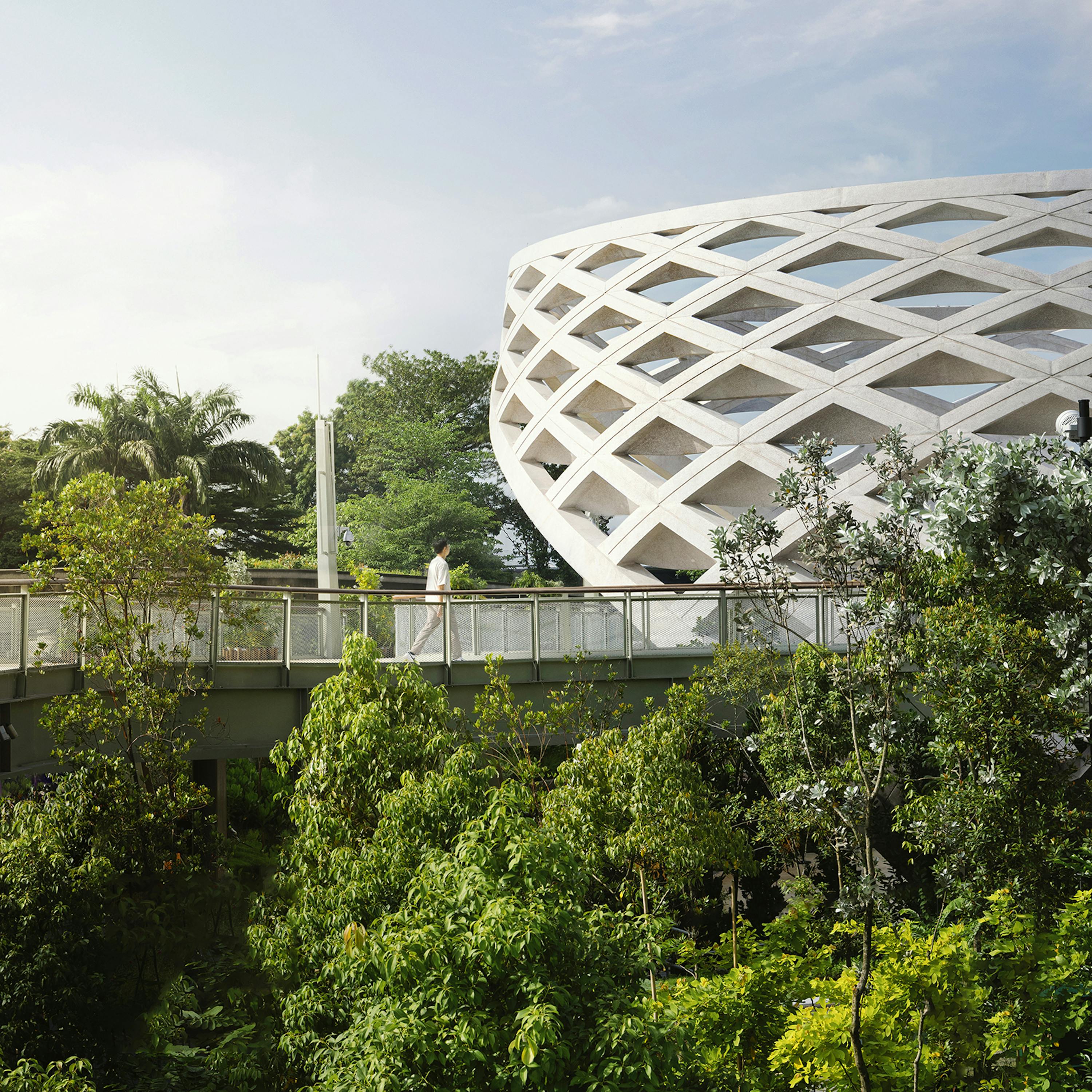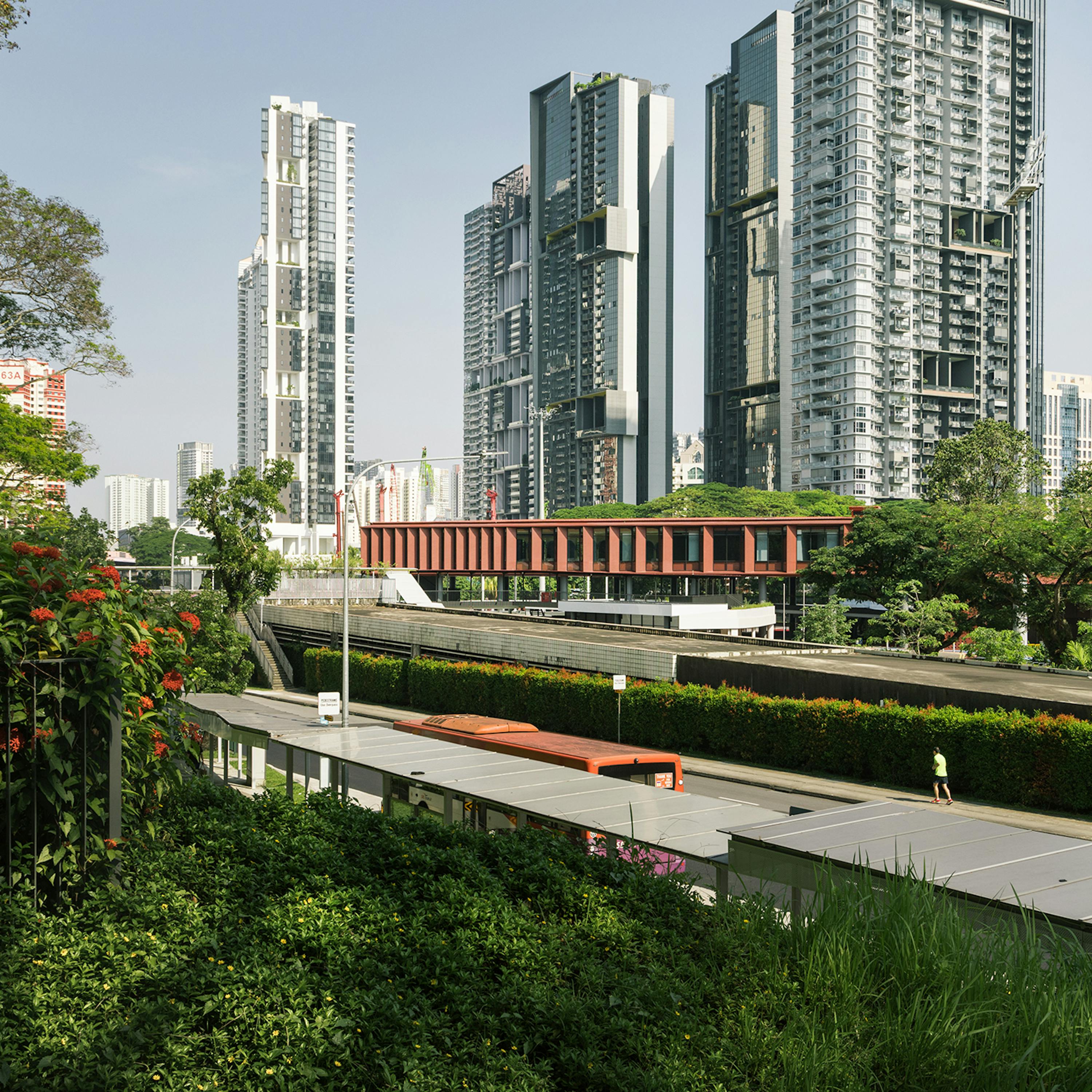From homegrown initiative to global phenomenon
Over the last eighteen months, we've had the pleasure of observing the evolution of "Le Corbusier: An Exhibition Over Space and Time" What began with a display of 45 models in Singapore has now transformed into a worldwide cultural phenomenon, encompassing nearly 200 models and connecting cities across different continents.
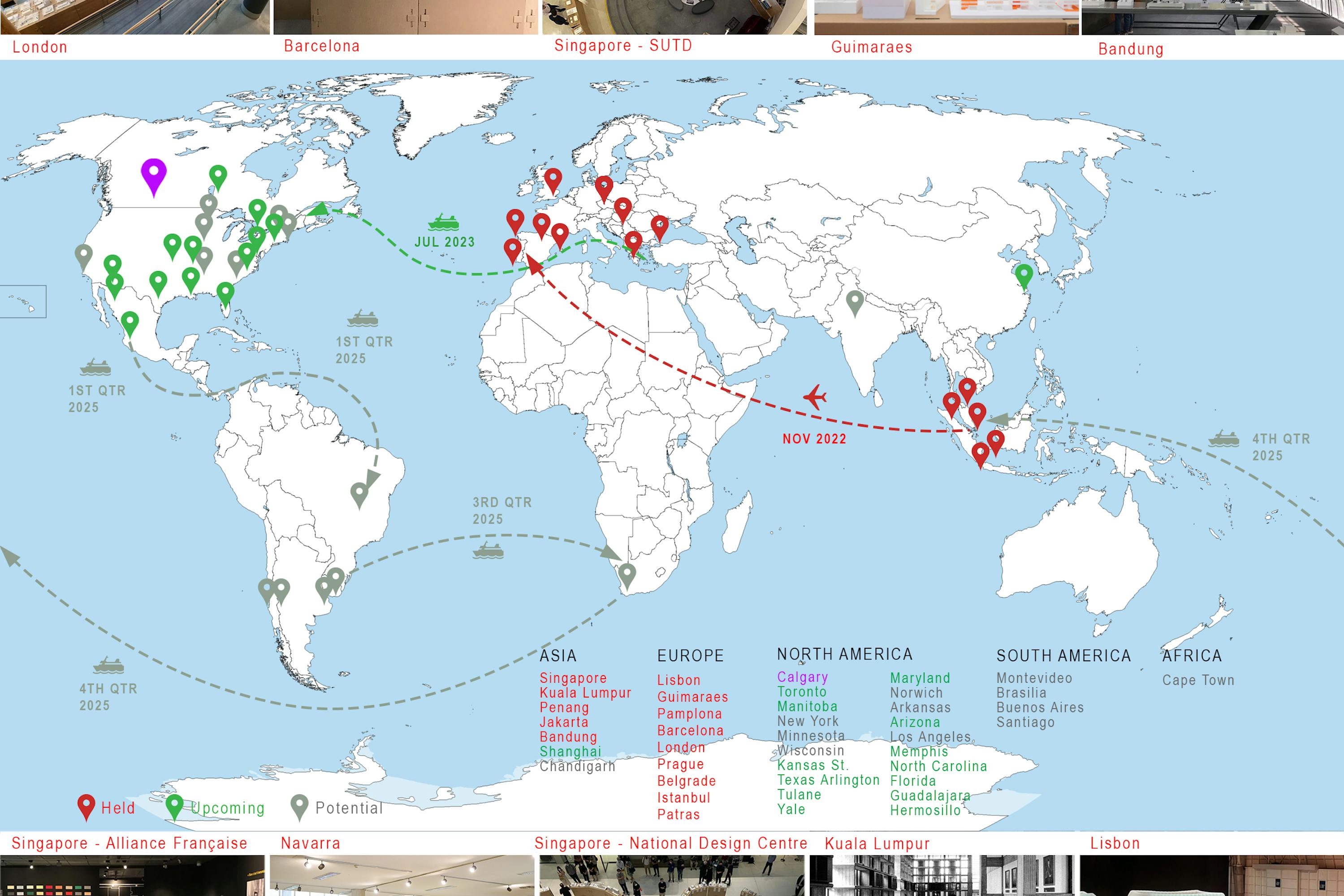
A brief history of the show
Presently en route to North America as I compose this piece, the exhibition's journey has been a labour of time and circumstance, interwoven with fortuitous connections and shared interests. Back in early 2021, our interview with René Tan, TK Quek, Jonathan Quek, Sock Mui Koh, Kaili Koh, Fiona Tan, and the RT+Q family provided the foundation for a feature in Issue 20 of Singapore Architect Magazine. Among the imagery captured by photographer Jason Lee of Absolute X, one photograph particularly resonated with us: a wall adorned with shelves housing an array of Corbusier scale models—a sight far from the norm in most architectural offices. As we came to learn, Rene Tan's studio has been introducing a unique tradition. Every incoming intern is tasked with crafting a Corbusier scale model as an integral part of their initiation and cultural assimilation.
As we took the reins of Archifest 2021 – Design Evidence later that year, the path ahead became clear: the world needed to see those captivating models. All that stood between this vision and reality were the right collaborators to bring it to life. Through a sequence of introductions, we crossed paths with Alliance Française, and the cosmic forces aligned effortlessly, giving rise to a remarkable partnership that swiftly became one of the highlights of Archifest 2021.
Though the festival itself has long concluded, our enthusiasm remains undiminished as we witness this remarkable collection continue to flourish and evolve. What began as 45 models in October 2021 has burgeoned into a nearly 200-strong collection, acquiring an unforeseen global cultural significance that exceeded our initial expectations.
As we prepare to pay tribute to the legacy of Le Corbusier and reflect on architectural magnificence in the past tense, it's essential to recognize and commend architectural brilliance in the present moment. We extend our heartfelt congratulations to Ar. Rene Tan for generously sharing his fervour and intellectual curiosity, showcasing a level of generosity and curatorial aspiration that few practicing architects can match.
Embracing a value system deeply rooted in a humanistic quest for an intellectually discerning cultural endeavor – undoubtedly nurtured during his Princeton education under the tutelage of Ralph Lerner and Michael Graves – Rene Tan has indelibly imprinted the urban fabric of Singapore. Moreover, he has now sparked a global cultural movement, a tribute befitting the stature of his hero: Le Corbusier.
Le Corbusier
A plethora of literature has been dedicated to the man himself, detailing his accomplishments, navigating through the occasional controversies, and dissecting the essence of his enduring legacy.
While I may not bear the mantle of a historian, I was fortunate enough to attend the Princeton School of Architecture as a graduate student during a period when leading academics like Beatriz Colomina and the late Jean Louis Cohen held history seminars. What struck me as profoundly invigorating was the divergence from the conventional approach of treating these courses as mere chronicles of vintage modernism captured in monochromatic photographs.
Both courses felt contemporary, punchy, and fresh, as they were trying to extrapolate and situate historical architecture in its context, poised to draw lessons applicable to contemporary discourse and practice.
This perspective is precisely what I urge us all to embrace as we delve into this exhibition and, in a broader sense, engage with history itself. While history may be etched in the archives of time, it is our mission to breathe vitality into its narratives, not through the lens of nostalgia, but with a fervent curiosity that brings it back to life and makes it relevant to our age.
As we contemplate Corbusier's architectural legacy and the contextual milieu that enveloped it is imperative to anchor our observations in the wider zeitgeist of the era.
The original global disruptor
When Corbusier unveiled his Maison Domino sketch in 1919, depicting an unadorned concrete structure supported by straightforward columns, beams, and slabs as the architecture of the future, much of Europe remained entranced by Neo-Classicism. Meanwhile, across the Atlantic in the United States, art deco and neo-gothic architects were reigning supreme. I'm confident that if the Villa Stein of 1926 or the Villa Savoye of 1929 were constructed in today's world, they would swiftly ignite a viral storm on social media and seduce our collective imagination. These structures are just as pertinent today as they were unconventional in their own time.
A simple Google search for the 1922 Chicago Tribune Tower competition will unveil a remarkable assortment of formal oddities. The world was struggling with the challenge of moving from the past to the future seamlessly and authentically.
Meanwhile, across the ocean in Europe, Charles-Édouard Jeanneret-Gris (who later became known as Corbusier) was advocating for open layouts, terraced gardens, ribbon windows, and façades liberated from the tyranny of traditional structure.
While the rest of the world struggled to shed 19th-century sensibilities, Corbusier was already envisioning the 21st century.
Beyond his architectural achievements, I am particularly intrigued by his remarkable astuteness as one of the earliest global architectural influencers. He not only held the conviction that his ideas could revolutionize the world, but he displayed relentless determination and remarkable shrewdness in spreading them – even a century ago!
A mere four years after completing Villa Stein in 1930, Corbusier revisited it with a film crew to feature it in his ''Architecture d'aujourd'hui" documentary. While a harsh eye might perceive the footage as somewhat unpolished cinematography, it's crucial to remember that this endeavor unfolded just three years after the first-ever talking film was showcased in theaters worldwide.Unlike any of his contemporaries, Corbusier embraced cutting-edge technology to chronicle not only his architectural creations but also his car and even his own countenance, presenting them for all to witness, both in his present and for generations to come. What a daring vision, what an unapologetic ego!
His assertion matched the audacity of his deeds: he wasn't merely altering our built environment, but he was ready to transform our entire way of life. His assertions were as bold as his actions, positioning him as a trailblazing disruptor within the realm of architecture, and quite possibly one of the few to have wielded such global influence so early, on such profound levels.
The original global influencer
To conclude, as we delve deeper into the realm of Corbusier and his contributions, I encourage you to explore not just his physical architectural legacy, but also the mindset that drove his actions. What if Corbusier were here today? It's quite likely that his approach wouldn't simply involve creating another series of concrete structures – after all, he achieved that feat a century ago.
Would he still be preoccupied with constructing buildings, or might he operate within the virtual realm? Could he harness the potential of Artificial Intelligence, or even forge an entirely novel business model for architectural practice? What modern technologies would he leverage to conceive and broadcast his creative work? How might he revolutionize the architectural profession in the 21st century?
My hope is that we all, in engaging with this remarkable collection of work as it journeys across the globe, seek the traces of a distinctive mindset rather than solely focusing on tangible outcomes.
May this exhibition serve as a catalyst, sparking vibrant dialogues and fresh contemporary discourse that transcends the boundaries of time.






